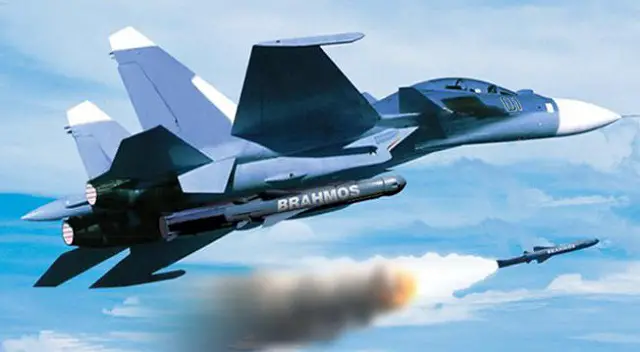Breaking news
BrahMos Anti-Ship Cruise Missile Will Be Tested on Su-30MKI in March 2016.
| |
|||
| a | |||
Naval
Defense Industry News - India, Russia |
|||
BrahMos
Anti-Ship Cruise Missile Will Be Tested on Su-30MKI in March 2016 |
|||
The
test trials of the air-launched variant of the BrahMos anti-ship cruise
missile are due to begin in March 2016, Sudhir Kumar Mishra, director-general
of the BrahMos Aerospace Company, told TASS at the MAKS-2015 Air Show.
"We have modified a Su-30MKI fighter jet for the installation of
a BrahMos cruise missile. The launching pad, which is currently undergoing
qualification tests, has also been modified," Mishra said. |
|||
 Artist impression: Brahmos missile air launched variant with Su-30MKI |
|||
According
to the company’s director-general, the qualification tests are
to be over by December 2015. The launching pad and the missiles will
then undergo flight tests on the Su-30MKI jet. A dummy missile will be launched in February. A technological demonstrator of the cruise missile with integrated sensors for measuring flight and technical characteristics will be launched in March 2016, Mishra clarified. He said the program had been fulfilled by 90%. Meanwhile, Russian-Indian BrahMos Aerospace has received an order for delivery of two regimental sets of BrahMos cruise missiles for Indian ground troops, Sudhir Kumar Mishra went on to say. We have received an order for delivery of two regimental sets of BrahMos cruise missiles for the Indian ground forces, Mishra told TASS at the MAKS-2015 Air Show. He added that other branches of Indian Armed Forces were planning to commission BrahMos cruise missiles in the next two months. Mishra said that the Indian Armed Forces had already commissioned the missiles for five of its squadrons and that more than ten Indian warships had been equipped or were being equipped with adapted modifications of BrahMos missiles. Mishra also noted
that government organizations in Russia and India had invested about
$3 billion in a joint venture whose cost had risen to $7 billion by
now. |



















